The Kailash trekking is fascinating over Tiber’s challenging mountains and offers blissful religious and geographical scenes. The place is believed to have been the residence of God Shiva, based on the Hindu tradition. This trek can be challenging, but the scenery is stunning and allows one to witness scenic beauty at a high altitude. The peaks and lakes on the way to Kailash are mostly covered with snow, offering a tranquil ambience.
Location
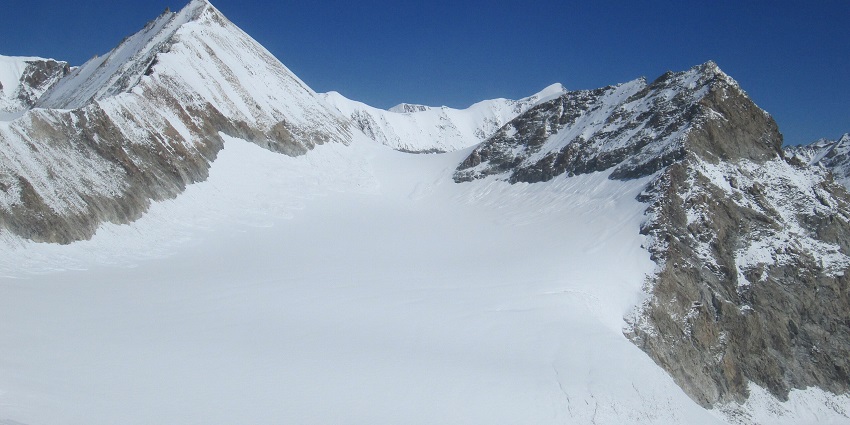
Photo: Asish Das75 / Wikimedia Commons
The Kailash trekking starts near the border of Nepal and India. Mt. Kailash, a high mountain in the Transhimalaya Kailash Range, lies in the Ngari Prefecture of the western Tibetan area. One of the challenging activities near the hill is completing the Kailash Kora, a sacred trek around Mount Kailash. The route takes you through rugged and steep terrain with breathtaking scenery. This journey offers a once-in-a-lifetime experience, marked by the place’s unique and powerful spiritual atmosphere.
Suggested Read: Enjoy Trekking In Nepal
How To Reach
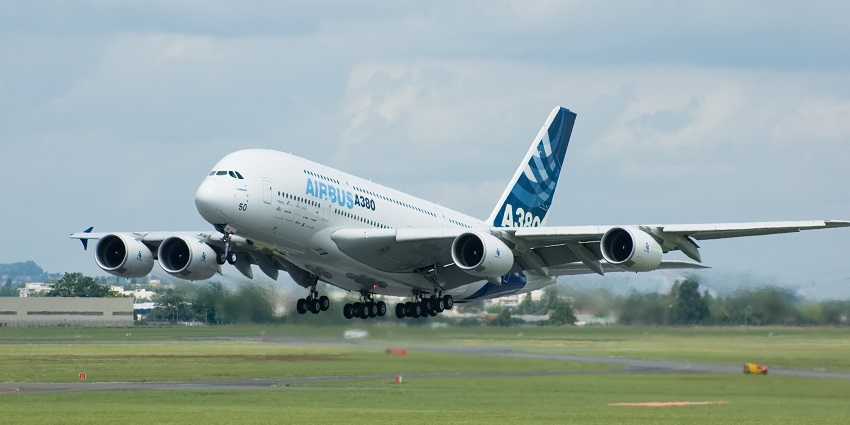
Photo: Dmitry A. Mottl / Wikimedia Commons / Image For Representation Only
By Air: One way to reach the Kailash Trek is to travel to Tibet’s capital, Lhasa. Major airlines provide flights from cities such as Beijing, Chengdu, and Kathmandu.
By Train: You can take a train to Lhasa from major Chinese cities, including Beijing, Chengdu, and Xining.
By Road: The most typical route is to drive from Lhasa to Shigatse before continuing to the rural districts of Mount Kailash.
The trek starts from Lhasa, which devotees or visitors cover on foot, pony, or yak.
Places To Visit While Kailash Trekking
Discover these places when heading for Kailash trekking:
1. Lake Manasarovar
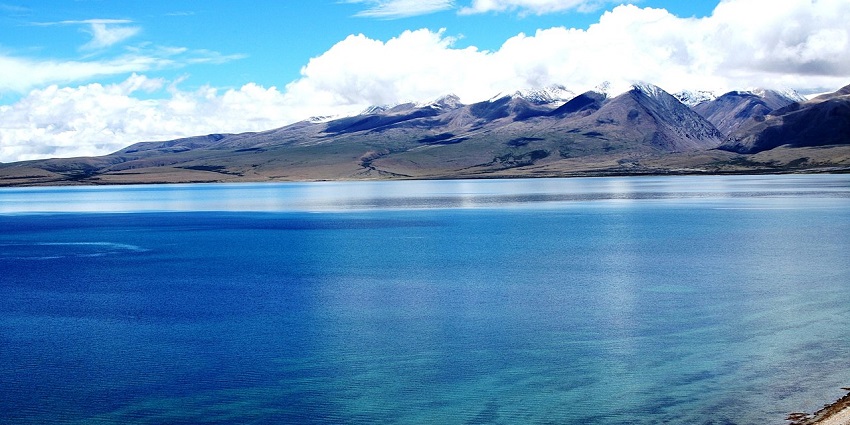
Photo: Prateek / Wikimedia Commons
Lake Manasarovar, located at 4,590 meters (15,060 feet) in Tibet, is one of the world’s highest freshwater lakes. It is regarded as a holy location in Hinduism, Buddhism, Jainism, and Bon and is believed to have been created by Brahma, the Hindu deity of creation. The lake’s crystal clear waters mirror the snow-capped peaks, especially the magnificent Mount Kailash. Lake Manasarovar attracts pilgrims and trekkers due to its spiritual importance and superb beauty. It’s also a popular place to perform religious ceremonies and seek blessings, making it an essential part of the Kailash Trek experience.
Timings: Open year-round
Suggested Read: Fewa Lake In Nepal
2. Tarboche Flagpole
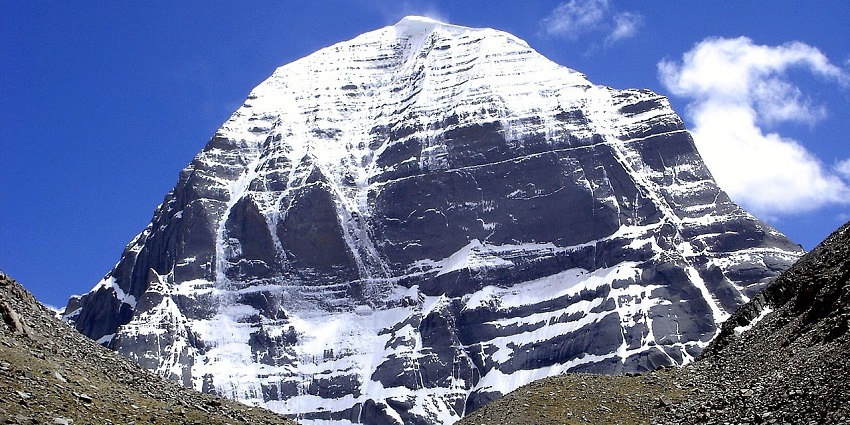
Photo: Ondřej Žváček / Wikimedia Commons / Image For Representation Only
The Tarboche Flagpole, also known as the “Tarboch Pole,” is a prominent religious and cultural monument near Mount Kailash in Tibet. This towering, traditional flagpole, decked with colourful prayer flags, marks the start of the Kailash Kora pilgrimage route. It is of enormous spiritual significance to Tibetan Buddhists, who undertake rituals and ceremonies around it to seek blessings and accrue merit. The flagpole is the focal point for the yearly Saga Dawa Festival, which brings pilgrims together to circumambulate and make sacrifices. Its vivid flags and devotional mood make it a must-see for guests on the Kailash Trek.
Timings: Open year-round
3. Saga Town
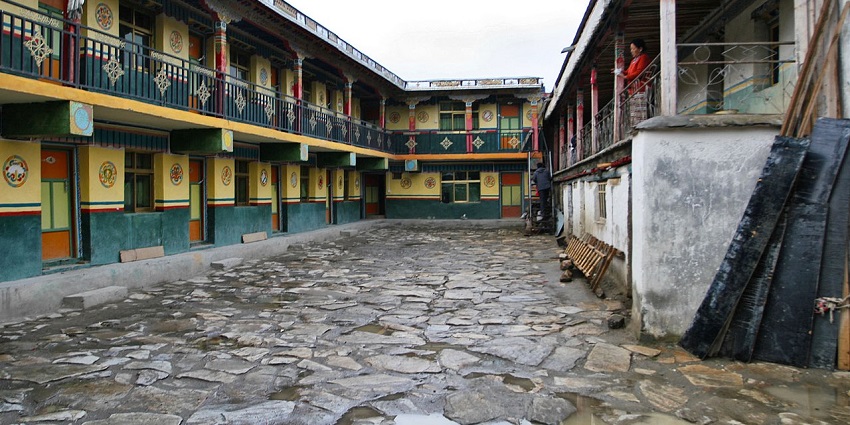
Photo: Alex Ang / Wikimedia Commons
Saga Town, located in the Tibet Autonomous Region, is an essential stopover for people travelling to Mount Kailash and Lake Manasarovar. Saga, situated along the path between Lhasa and the Kailash area, provides necessary services and amenities for trekkers and pilgrims. The town offers a variety of hotels, from simple guesthouses to more luxurious rooms, as well as local markets and restaurants. It also gives an insight into the daily lives of Tibetan communities. Saga Town is a vital waypoint for people beginning on the difficult Kailash Trek, easing transit and providing relaxation before continuing.
Timings: Open year-round
Suggested Read: Hill Stations In Nepal That Offer Stunning Views
4. Shigatse
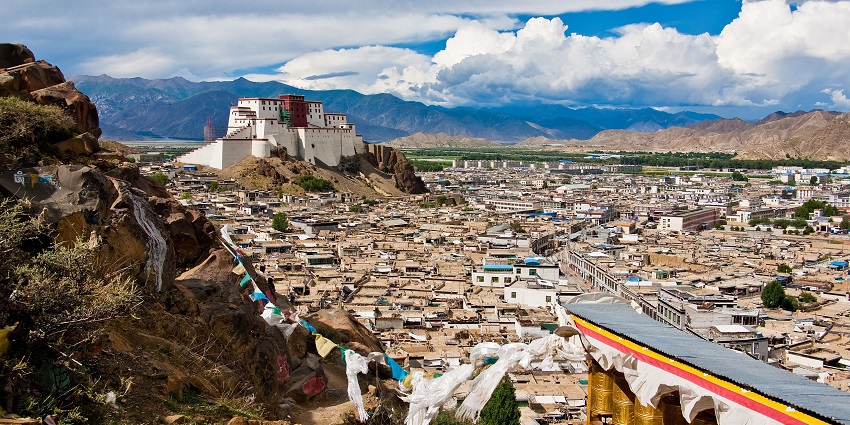
Photo: Antoine Taveneaux / Wikimedia Commons
Shigatse, Tibet’s second-largest city, is a thriving cultural centre and a must-see destination for visitors to Mount Kailash. Shigatse, located at an elevation of 3,840 meters (12,598 feet), has a rich Tibetan legacy and provides tourists with various historical and cultural experiences. The city is well-known for the Tashilhunpo Monastery, the Panchen Lama’s traditional seat, and its vibrant local markets. Shigatse is crucial for acclimatisation and preparation before travelling to more isolated areas. Shigatse’s bustling environment and historical significance make it an essential stop on the road to Kailash.
Timings: Open year-round
5. Lhasa
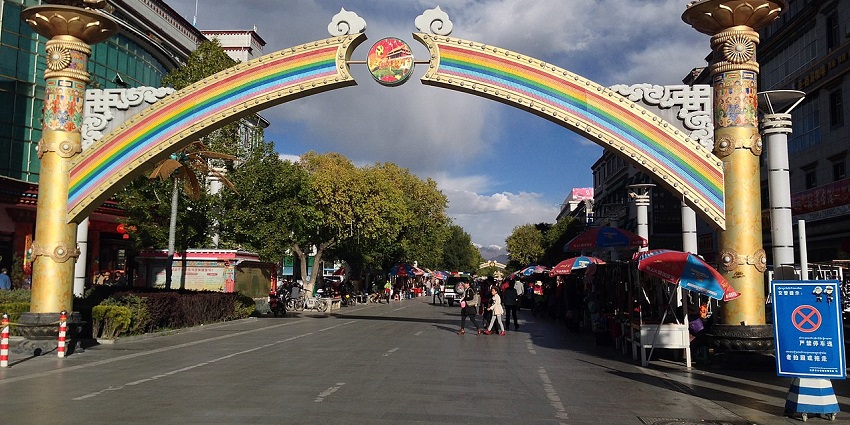
Photo: Chen Zhi / Wikimedia Commons
Tibet’s spiritual and administrative capital, Lhasa, is rich in ancient traditions and culture. Lhasa, located at a height of 3,650 meters (11,975 feet), is well-known for its spectacular architecture and prominent holy buildings. Key sites include the Dalai Lama’s former residence, the Potala Palace, and the Jokhang Temple, a Buddhist pilgrimage destination. The city is also home to thriving marketplaces and traditional Tibetan cuisine. Lhasa is the principal gateway for travellers travelling to Mount Kailash, providing vital amenities, cultural immersion, and comprehensive exposure to Tibetan tradition before climbing.
Timings: Open year-round
Suggested Read: Top Places To Visit In Nepal
Where To Stay
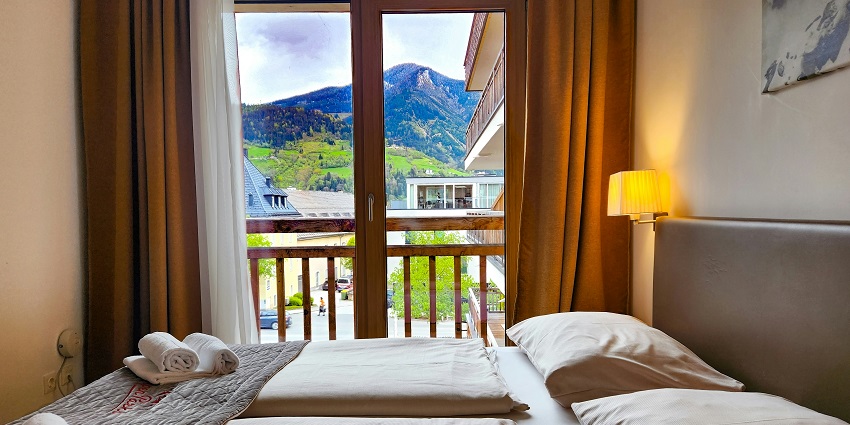
Photo: Ish Consul / Unsplash / Image For Representation Only
Accommodation choices during the trek include simple lodges to luxurious guesthouses. Saga Town has a variety of guesthouses and small motels that cater to hikers, giving basic facilities and a nice rest break. Shigatse has more accommodations, including mid-range hotels and traditional Tibetan inns. Lhasa offers a diverse range of accommodations, from luxury hotels to low-cost hostels, offering a comfortable stay. Modest resorts and campsites around Lake Manasarovar generally provide basic amenities. It is best to arrange lodgings ahead of time, especially during peak season.
Where To Eat
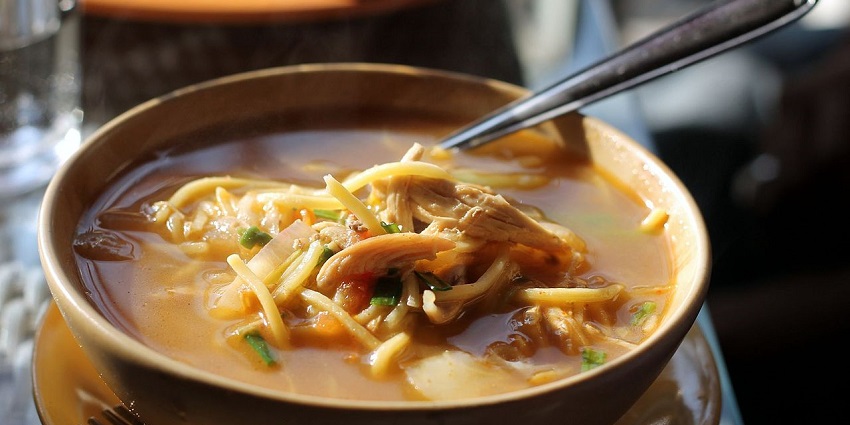
Photo: Arunabha.Goswami / Wikimedia Commons
Dining options on Mt. Kailash Trek vary from modest restaurants to more diversified alternatives. In Saga Town, local eateries provide traditional Tibetan foods such as momos, thukpa, and tsampa. Shigatse offers various eating alternatives, including Tibetan, Chinese, and foreign cuisine, to accommodate various preferences. Lhasa boasts many restaurants, from sophisticated establishments providing Tibetan and Chinese cuisine to modest eateries selling local specialities. Dining choices around Lake Manasarovar include local tea houses and tiny cafes serving straightforward and substantial meals appropriate for trekkers.
Suggested Read: Top Things To Do In Nepal
Best Time To Visit
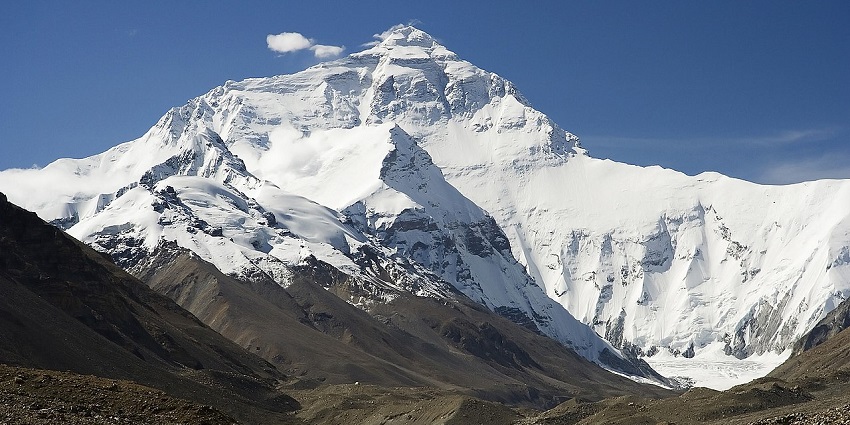
Photo: Luca Galuzzi / Wikimedia Commons / Image For Representation Only
The best time for trekking in Kailash is during the Tibetan spring and fall months, from late May to early October. During this time, the weather is generally warm, with a sunny sky and little chance of snow or severe rain. Temperatures are more tolerable, making hiking conditions better. The summer months of June to August are considered suitable because of the milder weather, although they can also bring some rain. The winter and early spring months are very cold with significant snowfall. Pilgrims frequently pick specific dates based on religious holidays, giving cultural meaning to their journeys.
Other Factors To Consider

Photo: Joanna Kosinska / Unsplash / Image For Representation Only
Cost Of The Trip
The Mt. Kailash trekking price varies according to package, duration, and level of comfort. Guided hike packages typically cost between ₹70,000 to ₹1,00,000 per person. This usually includes transportation from Lhasa, lodging, food, permits, and a guide. The package does not include additional charges like flights to Lhasa, visa fees, travel insurance, or personal expenses, which should be planned individually. Prices for more premium experiences or private trips may be more significant.
Tips for Travellers
- Spend a few days in Lhasa to acclimatise to the high altitude before beginning your trip. This helps to avoid altitude sickness.
- Bring the essential hiking gear, such as warm clothes, sturdy footwear, and a sleeping bag. Also, bring sunscreen, a hat, and sunglasses.
- Ensure you have the necessary travel permissions for Tibet, including the Tibet Travel Permit and any other permits for specific places.
- Drink plenty of water and stay hydrated.
- Respect local religious rituals and cultural customs.
- Weather conditions vary quickly, so be prepared for temperature changes.
- To guarantee safety and improve your trekking experience, choose a reputable tour operator or guide experienced with the Kailash region.
Suggested Read: Peaceful Places To Visit Near Nepal For A Refreshing Travel Experience
The Kailash trekking experience provides an extraordinary trip that combines spirituality with spectacular scenery. With careful preparation and adequate acclimatisation, you may go on a journey that will be very rewarding. Contact TripXL for complete travel packages and professional advice on making your Kailash experience unforgettable and creating memories that will last lifelong. Get ready to start your adventure now!
Cover Photo: Sumita Roy Dutta / Wikimedia Commons


 WhatsApp
WhatsApp
 Twitter
Twitter









